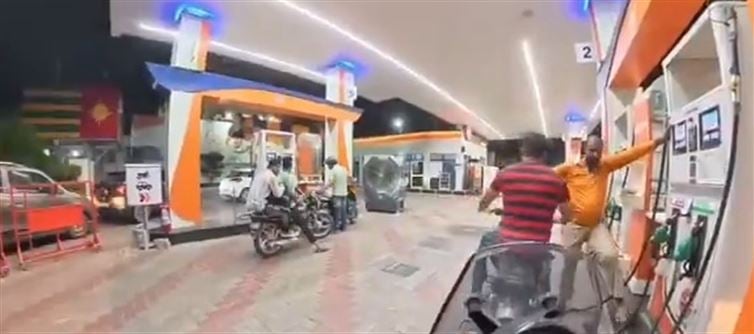
The scam begins as the motorcyclist approaches the petrol pump, a familiar scene for millions of indians reliant on two-wheelers for daily commuting. The pump, brightly lit and bustling with activity, appears trustworthy at first glance. However, the trouble starts when the customer requests 500 rupees worth of petrol. The attendant, dressed in the standard orange uniform, initially seems to comply, but the deception is soon revealed.
As the fuel is dispensed, the video captures a critical moment: the pump's meter shows only 405 rupees worth of fuel, despite the customer having paid 500 rupees. This discrepancy is not a mere error but a deliberate act of fraud. The attendant's actions, including manipulating the pump and avoiding eye contact, suggest a rehearsed routine designed to exploit unsuspecting customers. The video's timestamps and close-ups of the pump's display provide undeniable evidence of the shortfall, with the text overlay "Only 405 out of 500" driving home the point.
The scam's mechanics are straightforward yet effective. The attendant likely adjusts the pump's settings or interrupts the flow prematurely, ensuring that less fuel is delivered than what is paid for. This practice, known as "short-filling," is a common tactic in regions where oversight is lax and customers are often in a hurry. The video also shows the attendant's attempt to deflect responsibility, claiming the issue lies with the staff, a classic diversionary tactic to avoid accountability.
The aftermath is equally telling. The customer, armed with a smartphone, confronts the attendant, demanding an explanation. The attendant's flustered response and the eventual involvement of another staff member underscore the pump's complicity in the scam. The video concludes with a call to action, urging viewers to check the pump's readings and report such incidents, with the petrol pump's details conveniently pinned in the comment section for further action.




 click and follow Indiaherald WhatsApp channel
click and follow Indiaherald WhatsApp channel